When you live in Mexico, hot sauce quickly becomes a weekly, if not daily, condiment. We loved hot sauce before we moved here, but we’re both convinced that our heat tolerance has increased since. Learning how to make fermented hot sauce is like learning an art. You get a few basics down and then the creative possibilities are endless! As an artist, I feel like that’s what I connect to most about the process. And don’t even get me started on the vibrant colors at play.
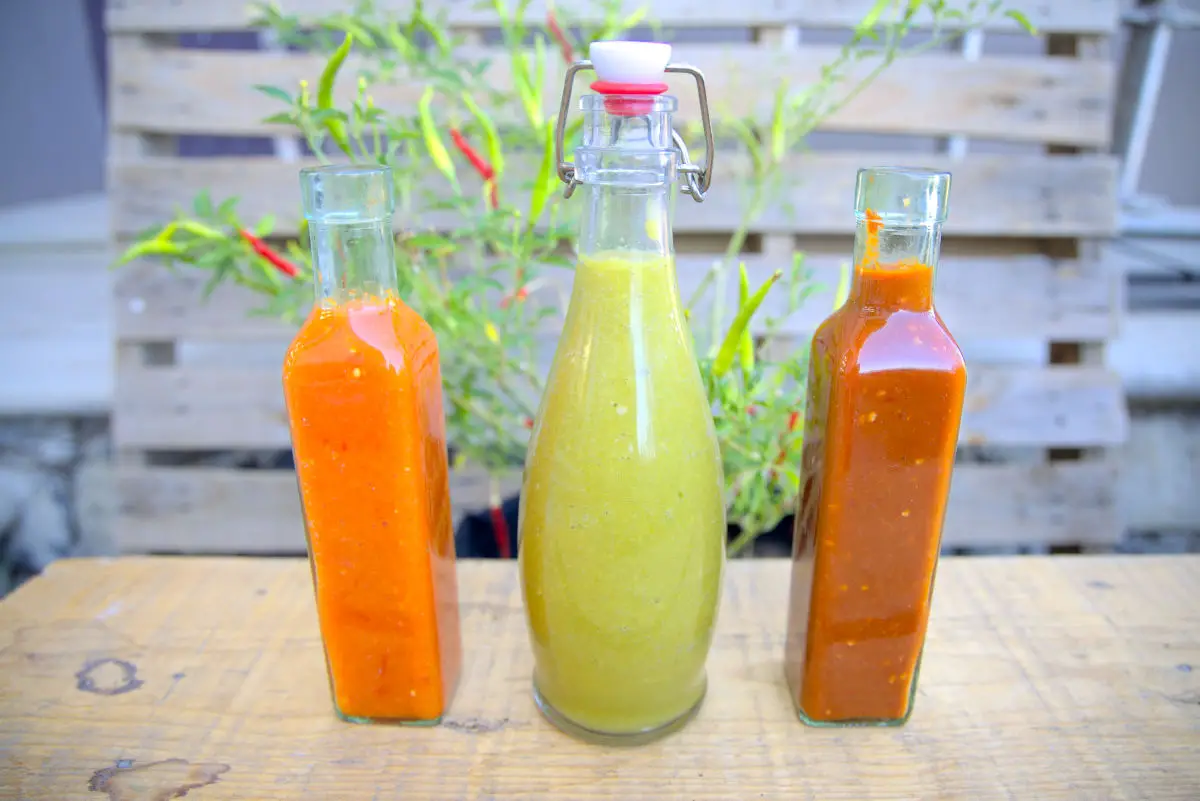
How to Make Fermented Hot Sauce
You might need convincing now, but you won’t after your first taste. Fermenting hot sauce brings out a beautiful depth of flavor from peppers that you just can’t get any other way. You’re not only building complex flavor, but you’re also developing a sauce full of probiotics. Through the process of lacto-fermentation you build an environment where beneficial bacteria can thrive. A “fermented gut” is a healthy gut is a happy gut. You get the idea. For more information on fermentation check out this blog post.
Did you grow or buy “too many” peppers this year? Fermenting is my favorite way to preserve a pepper harvest or a purchase where my eyes were bigger than my stomach.
What’s in It?
Peppers! (did you see that one coming?)
You can use fresh or dried chilies. Let’s talk about the Scoville scale. This is your official ranking on the heat level of pepper varieties. It will be helpful in determining what kinds you want to include in your sauce based on how much heat you can handle.
Here are some popular options from sweet to HEAT:
- Bell
- Banana
- Poblano
- Anaheim
- Chipotle
- Jalapeño
- Serrano
- Chile de Arbol
- Tabasco
- Cayenne
- Thai
- Habanero
They all have their own flavor profiles, so experiment with what’s available near you. I often mix and match to create more complexity in the final flavor.
Onions
This is pretty much a constant in my hot sauce creations. I love the way it helps manage the heat level and compliments hot peppers.
Garlic
Once again, I almost always add garlic to my hot sauce ferments (ok I add garlic to most savory foods I make).
Carrots
This might not be the first thing that comes to mind when you think of hot sauce, but it can be a nice way to balance out the acidity.
Fruit
Try adding peaches, berries, mangoes, or pineapple to your hot sauces for a touch of sweetness. A classic combination is mango and habanero. If you add them before the fermentation period, know that alcohol will be created in the process, but if you puree them into the sauce afterward it will not.
Herbs & Aromatics
Cilantro, oregano, ginger, and peppercorns are a few I’ve come across in recipes, but I’m sure there are many more possibilities.
Using chlorinated water can interfere with the fermentation process, so make sure you are sticking to a distilled or filtered source. If you only have access to tap water you can let your water sit out in a bowl overnight, and enough of the chlorine should be removed for safe fermenting.
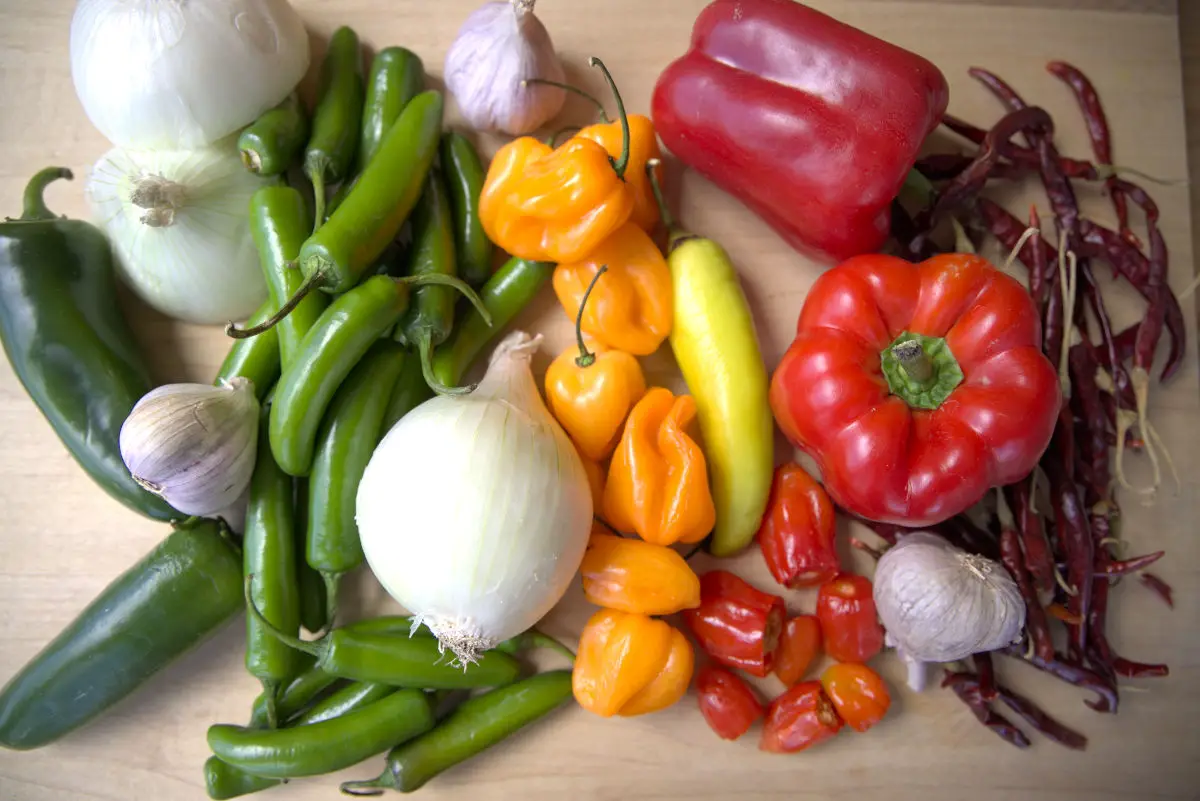
Equipment
Because you’re probably not making a huge batch of hot sauce all at once, I recommend quart or half-gallon glass jars. Glass or ceramic containers are both good choices for the fermentation process. If you have a fermentation crock feel free to use it here, but I usually leave mine for larger batch projects.
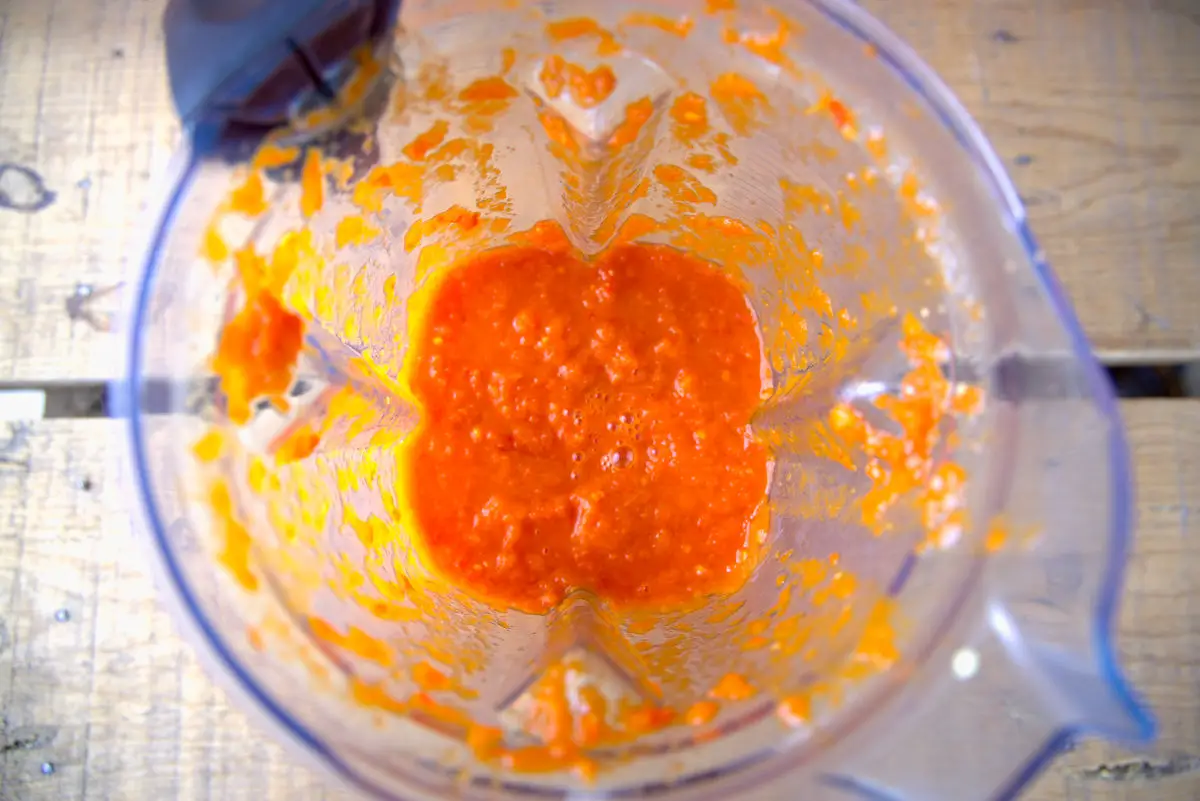
Fermentation Weights (recommended, but optional)
These are typically made of glass or ceramic and help ensure that your fermenting solids stay submerged in their liquid and are kept from exposure to the air. This helps prevent mold from forming. I use these glass weights, and they work wonderfully. If you don’t have weights, try using a plastic bag or a small glass jar filled with water to weigh down your solids.
Airlock Lid (recommended, but optional)
These help maintain an anaerobic environment in your jars so that the CO2 building up can escape, but oxygen is kept from entering. There are several varieties for purchase, but I love these food-grade silicone ones. These are game changers and greatly decrease the potential for mold growth on your ferment.
If you don’t use an airlock system, you can use regular lids and “burp” (open them) once or twice a day to release the CO2. Keep in mind that metal can rust when in contact with vinegar, so reusable plastic might be the best option here. You can also try using a coffee filter or lightweight cloth tightly secured with a rubber band.
Colander and Fine Mesh Sieve (optional)
You’ll use a colander to separate your brine from your peppers after fermentation. If you plan on straining your hot sauce, you can use a fine mesh strainer to get the job done. We usually go without straining, but for that tabasco-like consistency, you’ll want it thinner.
Glass bottles are the way to go for storage. These are my favorite for hot sauce, but you can easily reuse bottles from storebought products or keep them in mason jars (because if you’re homesteading you probably have a stash).
How to Make Fermented Hot Sauce
This recipe is fairly straightforward, and the hardest part is waiting for your peppers to do their thing in fermentation.
Select and Prepare Your Ingredients
Choosing organic or homegrown peppers is always ideal, but we don’t always live in the ideal. Give your peppers and anything else that you won’t be peeling the skin from a good wash. Use a sharp knife to de-stem your peppers. You can choose to remove or leave the seeds. When dealing with fresh peppers I usually de-seed to prevent bitterness. Chopping your peppers and other ingredients coarsely will speed up fermentation.
As a starting point, chop up 2 pounds of peppers and vegetables to fill a 2-quart jar.
*Don’t forget that you’re dealing with HOT peppers here, so wearing gloves while handling is always recommended. We’ve all made that mistake of touching an eye after cutting up a jalapeño (at least I hope it’s not just me).
Create The Brine
We have found a 3% brine to be successful across the board. That means that for every quart of water you’re using, add 3 TBSP of salt. You’ll need about 1 quart of water to fill a 2-quart jar full of peppers. You can whisk your salt into lukewarm water or place the mixture on the stove, bring it to a simmer just until dissolved, and let it cool before adding to your peppers.
Fill Jars
Pack your jars, leaving about an inch of headspace, with your solid ingredients. Pour the brine over your pepper mixture and place a fermentation weight on top to ensure that everything remains submerged in the liquid.
Wait
Secure your lid and cover setup (I use the silicone airlock lids with a metal mason jar band). Place in a location out of direct sunlight at about room temperature. Cooler temperatures will slow down the fermentation process and warmer temperatures will speed it up, so make note of that.
Leave to ferment for at least a week, but I find the sweet spot around 2 weeks. During this time, you’ll notice some streams of bubbles forming as part of the fermentation process and the brine will get cloudier. Check your ferment daily to ensure there is no mold developing and to burp it if necessary.
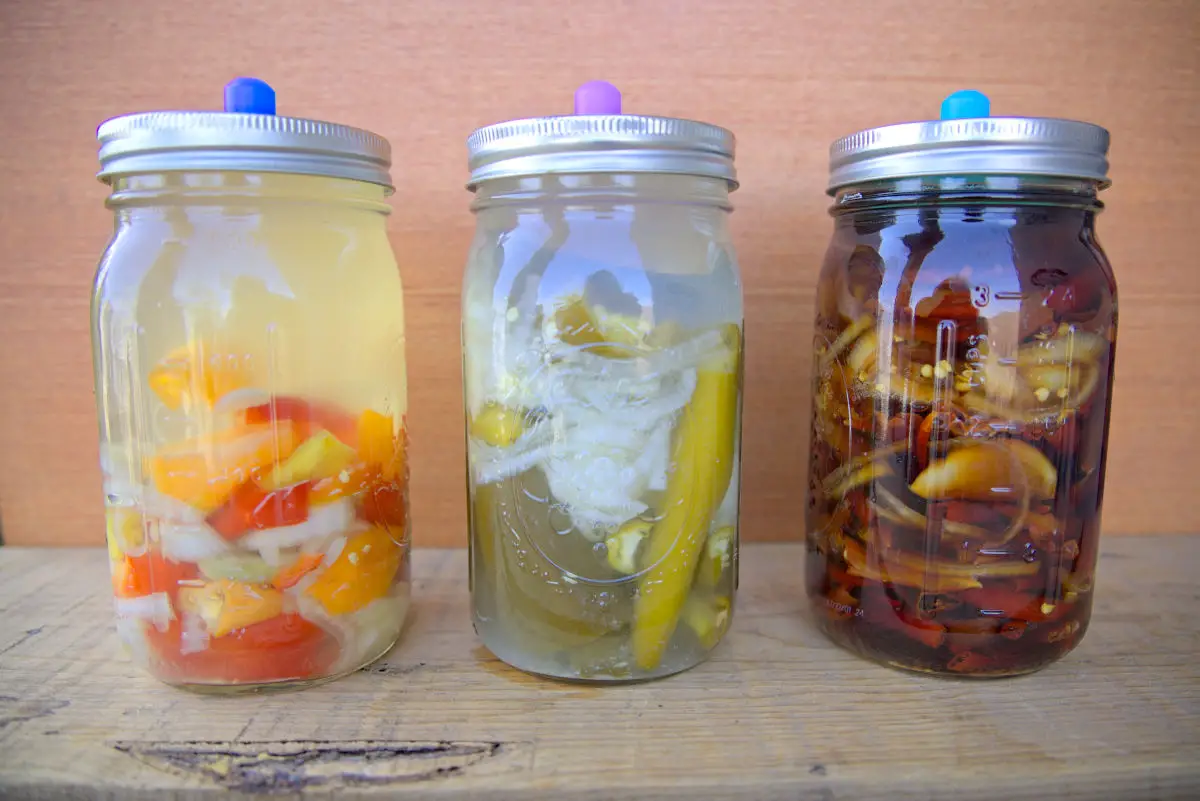
Strain & Blend
Strain your pepper mixture, reserving the brine. Add the remaining solids to a blender (if using a food processor you might want to split it up into batches because of the liquidity). Slowly add reserved brine and vinegar (if you so choose) back into the sauce. I start with ½ cup of brine and a splash of Apple Cider Vinegar and then add until the consistency and flavor is to my liking.
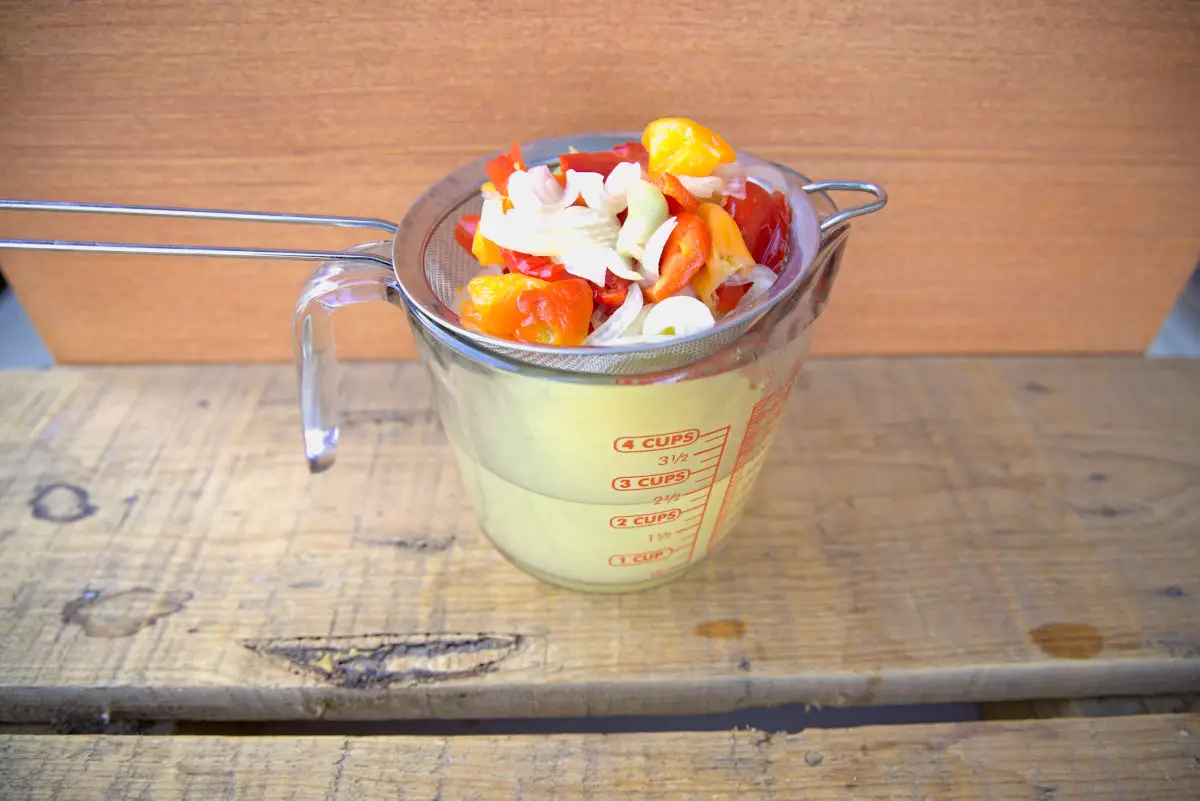
Funnel & Store
Funnel (or just pour if your jar opening is large enough) your hot sauce into sealed glass bottles for storage. If you want a thinner hot sauce, place a fine mesh strainer atop your funnel. You can save the remaining pepper mash to add to soups and sauteed dishes!
Place your jars in the fridge and they should keep for at least 6 months. Because the fermentation process won’t stop completely in the fridge, you might want to either loosely screw on your lid or “burp” the jar every so often to release any CO2 buildup.
Recipes to Try
I crafted and tested out three recipes for this blog post, and they all turned out to be delicious and unique. Choose one and follow the instructions above or experiment with your own ingredients!
Extra Tips
Use sterilized jars and tools– Starting with a clean environment is of the utmost importance when fermenting. A simple wash with warm water and soap is sufficient. You don’t want to start your ferment with any unwanted bacteria thriving.
Notice kahm yeast– It’s a harmless yeast, but you’ll want to skim it off before straining and blending your peppers because it can affect the flavor of your sauce. It is relatively normal to see when fermenting, and you’ll notice it as a whitish film on the surface. Learn to tell the difference between mold and kahm yeast, as mold can be harmful to consume. Mold will have a fuzzier appearance and can range in color.
To strain or not to strain– You can choose whether or not to strain your blended hot sauce. For a thinner sauce, strain, and for a thicker sauce don’t! If you strain your mixture you can always save the leftover pepper mash to add to other dishes.
Pepper seeds– I choose to remove the pepper seeds (except when using dried peppers) before fermenting as I find that they add an unwanted level of bitterness to the hot sauces. It is safe to leave them, though!
Experiment with fermentation time– There are people who ferment their peppers for years! You’ll get a good fermentation in just two weeks’ time, but you can alter the flavor by leaving the peppers to ferment for months.
Storing and Using Fermented Hot Sauce
Fermented hot sauce is a living food!
We store our finished hot sauces in sealed containers in the fridge, and they will last for at least 6 months that way. Refrigeration will greatly slow down the fermentation process, but it will continue even in the fridge. Either leave your lids slightly ajar or open them every once in a while to release the CO2 build-up.
Adding vinegar (apple cider or white) to your blended peppers will lower the ph and increase your sauce’s preservation time in the fridge. I find that apple cider vinegar adds a pleasantly acidic taste to homemade hot sauces, and I always add a splash or two to help increase its preservability.
Some people choose to add vinegar (or acidic citrus juice) and cook their finished hot sauce. While this can extend the shelf life by halting the active fermentation, it also kills all that probiotic goodness (which I personally love most about the fermented hot sauce).
I would not suggest canning fermented hot sauce, as it will destroy the health benefits of fermentation.
FAQs (Frequently Asked Questions)
Common choices include jalapeños, habaneros, or serranos, but any variety can be suitable based on your heat level preference.
It’s recommended to use filtered or chlorine-free water to avoid inhibiting the fermentation process.
It’s up to your personal preference. Leave the seeds for added heat or remove them for a milder sauce.
More On Fermentation
Fermentation of food and beverages extends preservation and adds health benefits. Fill your kitchen routine with more delicious fermentations.
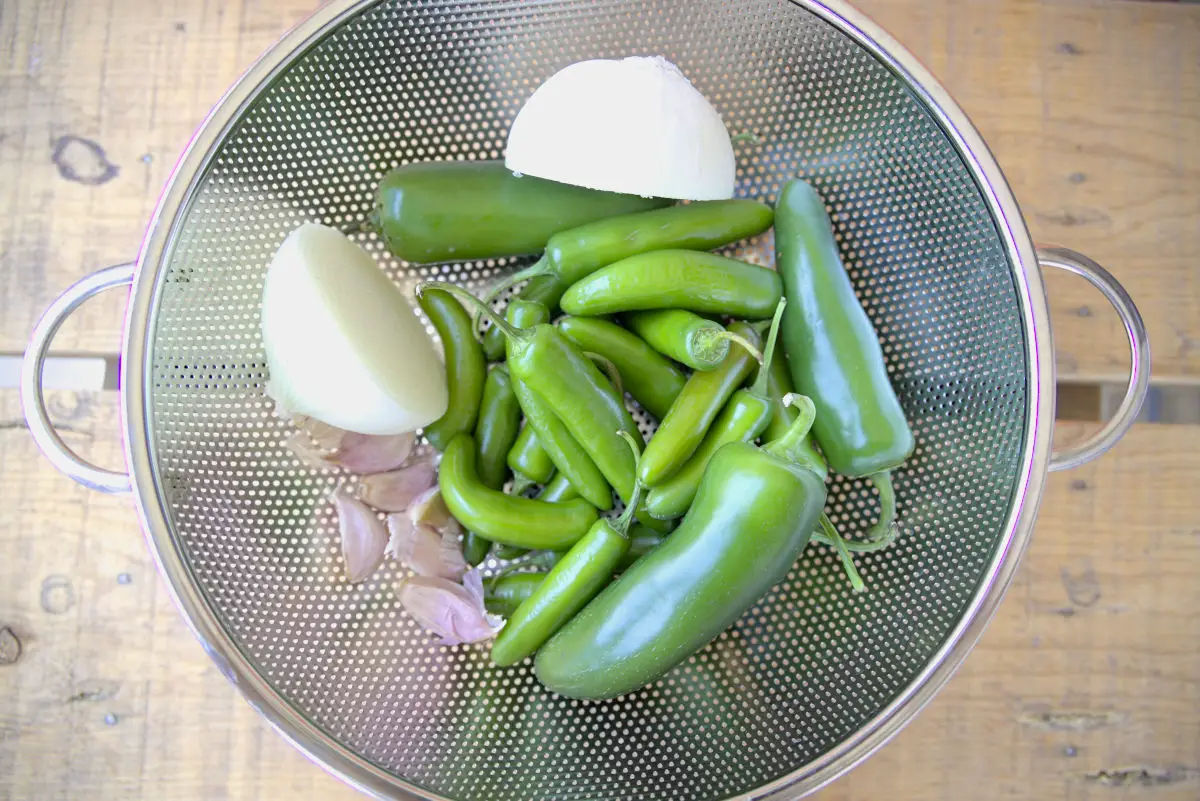
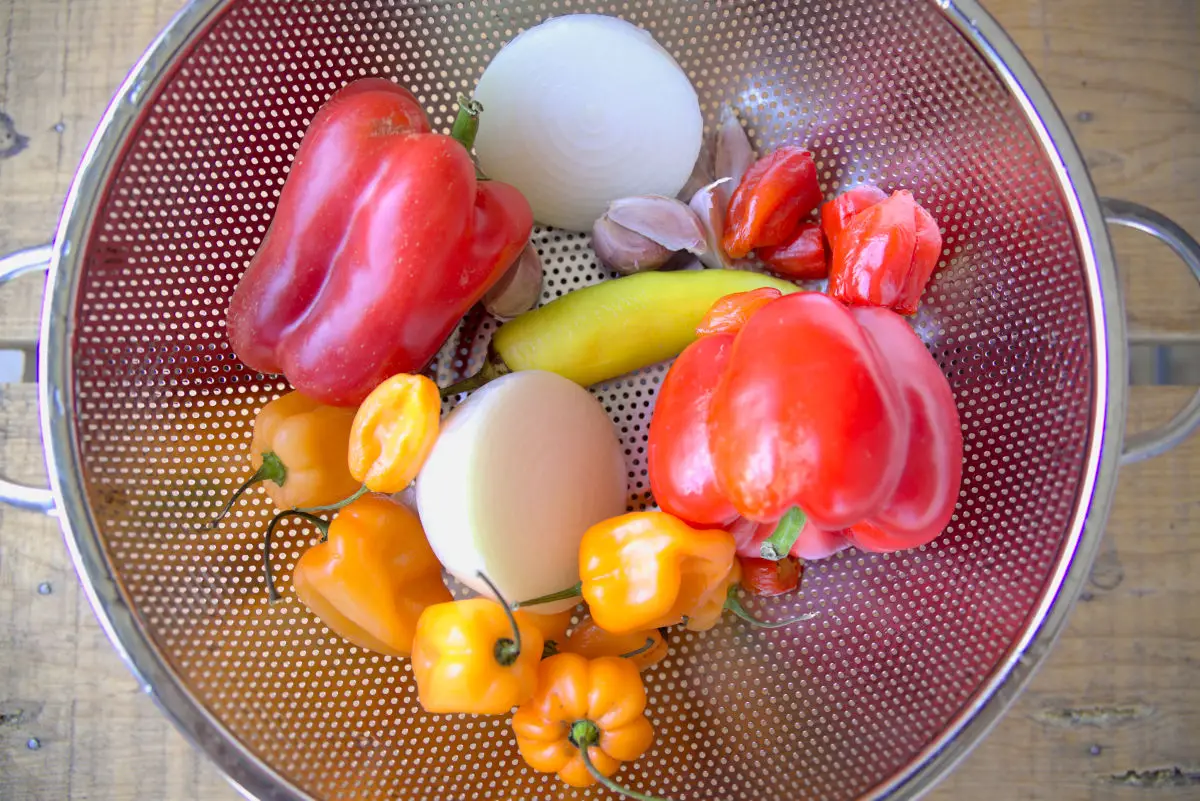
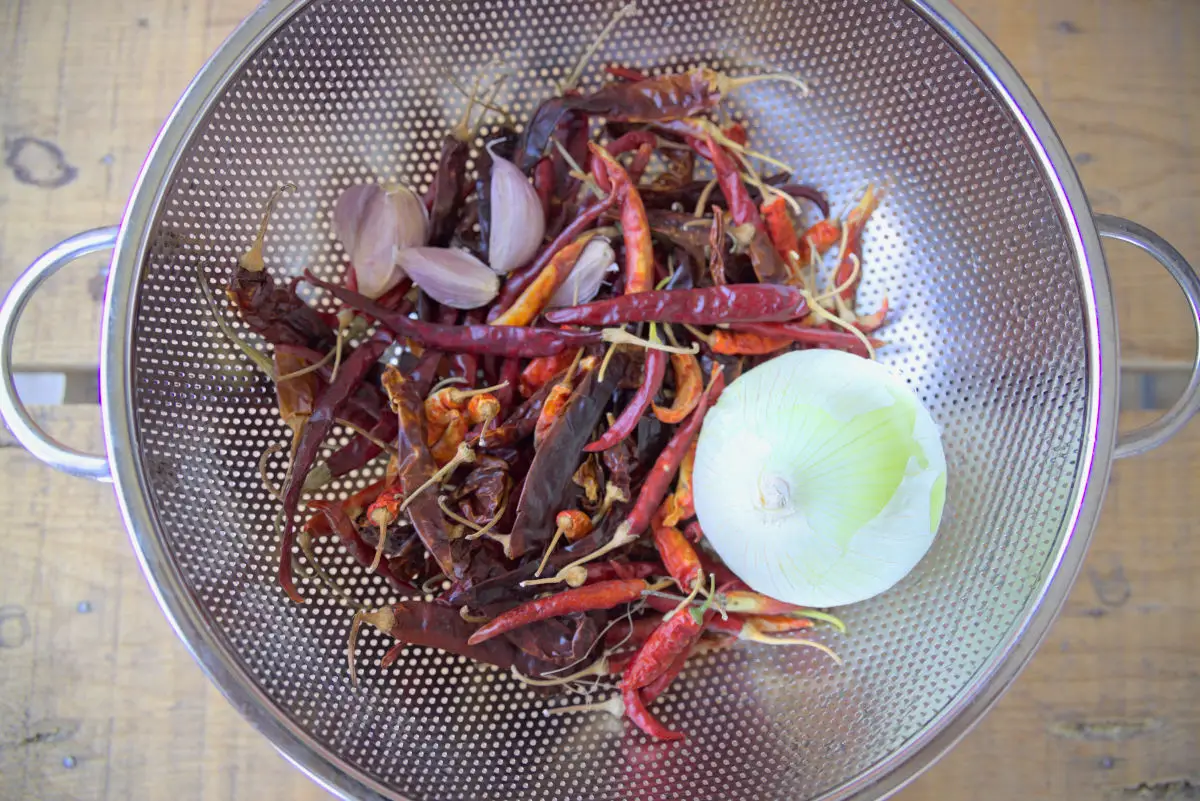


Once you strained the hot sauce ingredients to blend, can you add in other items to change the flavour that haven’t been fermented? I have some oranges to add a citrus component, but they’re fresh and weren’t fermented with the rest.
You absolutely can! The thing to be weary of is that adding the extra sugars will cause your hot sauce to bump up its fermentation process, so I’d recommend either storing your hot sauce in the fridge with a slightly loose lid, bringing all the contents to a simmer (including the added fruit purée) before storing, or adding in an extra splash of vinegar to lower the pH (aiming for below 4.5) for preservation.